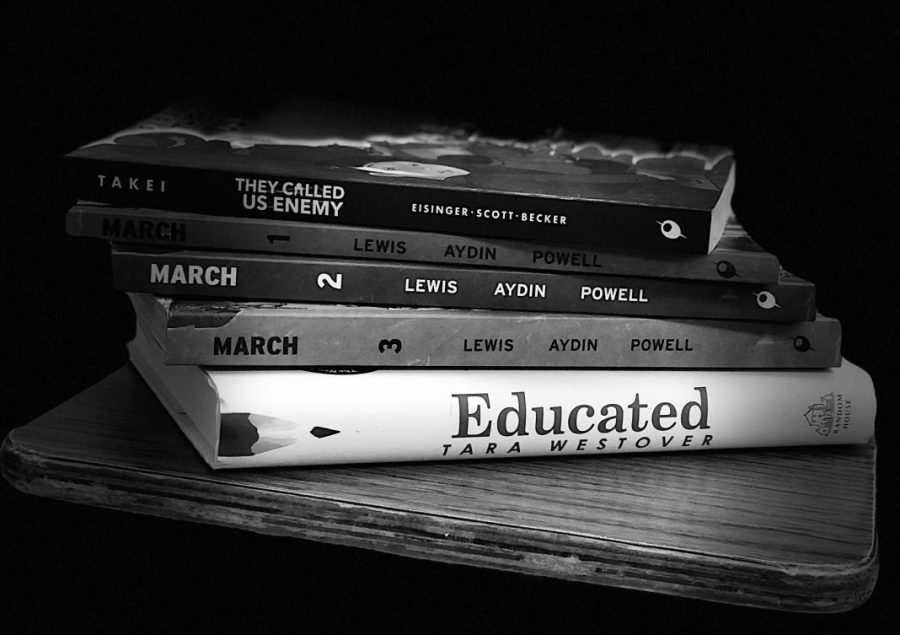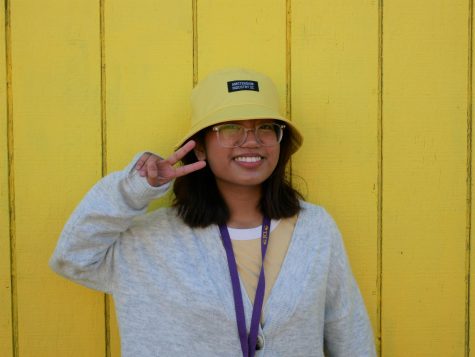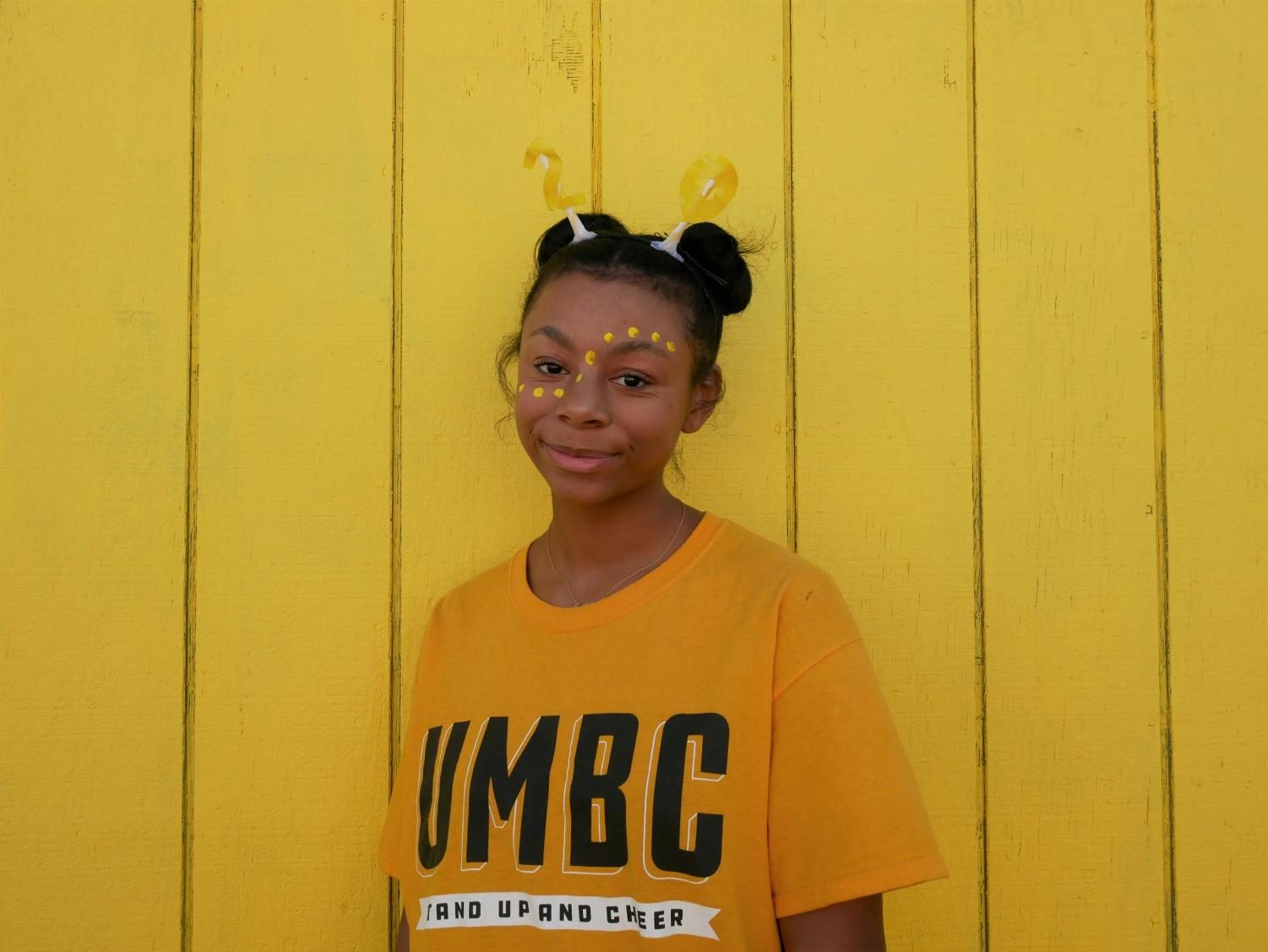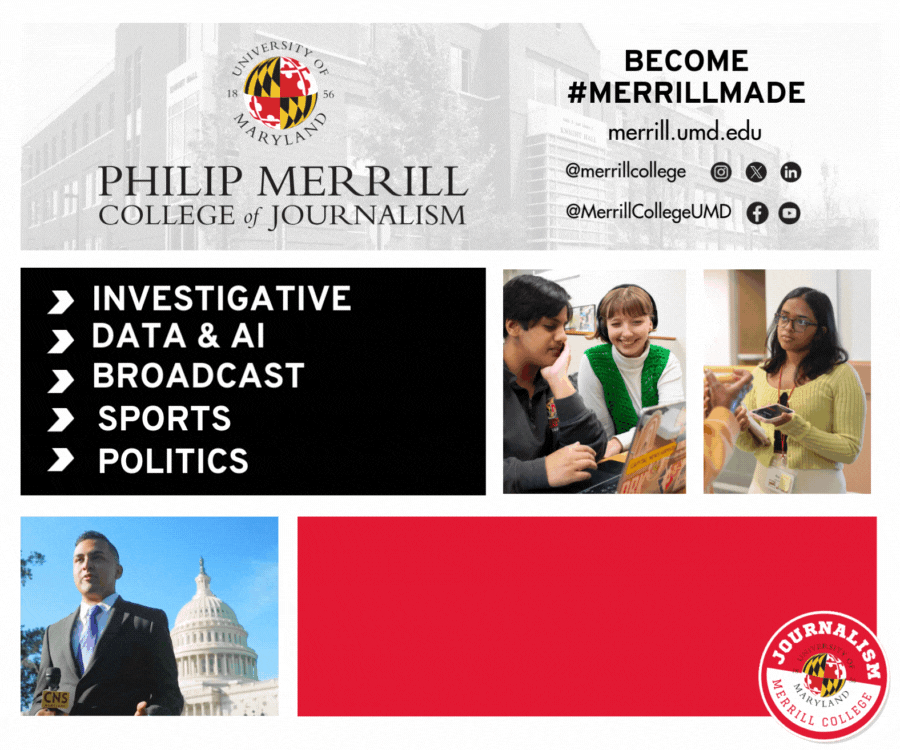Is ERHS Doing Enough to Diversify Its Reading List?
A few of the books new to ERHS.
November 14, 2019
This year, Eleanor Roosevelt welcomes a new, broadened spread of books, written by authors of different ethnicities and backgrounds.
The list of new books is provided by Audrey Ruoff, an English teacher and the department chair who also teaches the Journalism class that publishes this newspaper. According to Ms. Ruoff, some new additions to the growing list of books include They Called Us Enemy by George Takei, American Born Chinese by Gene Luen Yang, and The Joy Luck Club by Amy Tan, which are all written by Asian-American authors.
Educated by Tara Westover, a born fundamentalist Mormon, has also been added to the list, as well as We Should all be Feminists by Chimamanda Ngozi Adichie and March: Books 2 & 3 by John Lewis, both by African-American authors.
Mrs. Rachel Hickson, English teacher for both ninth and eleventh graders and sponsor of the “Raider Readers” book club, rejoiced when hearing of the new additions to the school-wide book selection, but notes that she is also a fan of the old reads.“I think it’s good to have a mix of old and new perspectives,” she voiced.
However, she is aware that there is a gap when it comes to the authors of the books given to students. Specifically, she feels that “[she] is not seeing enough black men as novelists” on ERHS’ reading lists.
Sophomore Cynthia Rego also notices a trend in the school’s past book selections. “Many of the books we read tend to be written by older English men,” she stated. However, she is beginning to see some variance, adding that “last year, [she] read The Hate U Give, and that was the first story that [she’d] read in a while that had any kind of diversity in it, and it was a nice change.”
In sponsoring her own club, Raider Readers, Ms. Hickson makes an effort to cover books from a variety of perspectives.
“When we’re selecting books [for the club], we try to be diverse,” she explains.
“[We] represent as many different people and different cultures as we can.” Their booklist includes The Sun and Her Flowers and The Bastard of Istanbul by Rupi Kaur and Elif Shaflak, respectively, two female authors of color.
On the opposite side, however, Hickson acknowledges that “regardless of the author, we can usually relate to a situation in a book.”
“Many authors, even if they are all white males, are writing situationally about all human beings.”
Despite the strides that have been taken to diversify the spread of book options, there is still a huge gap in the representation of LGBTQ+ authors in the ERHS English curriculum. LGBTQ+ history, despite its significance, is barely included in US and World History courses.
Roosevelt’s own school library, in contrast to the allotted curriculum, aims to provide as much LGBTQ+ literature as possible. Ranging from YA novels, graphic novels, and historical nonfiction, the media center houses a wide variety of genres on the topic. “As a library media specialist,” says Ms. Peterson. “I take an oath of intellectual freedom. That oath implies that I present all topics, of varying viewpoints, despite whatever position I may take.”
School policy dictates that all books in the library must have a certified book review of a positive nature. This quota allows for a very diverse collection of books in the library. Some LGBTQ+ books that are currently available include The Song of Achilles, Aristotle and Dante Discover the Secrets of the Universe, Simon vs. the Homosapiens Agenda, The Prince and the Dressmaker, and Georgia Peaches and Other Forbidden Fruits.
As of today, the only known book with LGBTQ+ characters in the school’s curriculum is The Color Purple by Alice Walker, which is both available in the school library and is selected for AP English Literature classes.
Although ERHS has made an effort to diversify its shelves, there is still a long way to go until all of the voices of the school are given a spot on the reading list, specifically the voices of LGBTQ+ authors. The media center is very receptive to suggestions for new books, giving students the academic freedom to request books as they wish. The students serve a very important role in pushing for diverse literature that they feel should be in the library.





